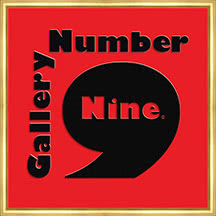
The Basic Elements of Art
The basic elements of art are the elements that make up a work of art. They are analogous to the atoms in our bodies that combine to form molecules. For instance, water is made up of hydrogen and oxygen, while sucrose is made up of carbon and oxygen. Artists use the seven basics elements of arts to create a work of art, and combine them with design principles to create a work of art. Some works of artwork contain all seven components, but at least two of them are always present.
The seven basic elements of art are the building blocks of every work of art, and they are what make an artwork beautiful. The seven basic elements of art are line, color, form, space, texture, and value. Each of these elements plays an essential role in making an artwork, so learning about them will help you analyze, write about, and talk about art. Today’s article will teach you how to make the most of the 7 fundamentals of good design.
The basic elements of art are space, shape, and form. Each of these components has a different function. For example, in a painting, positive space is the area where an object is located. Negative space is the empty space where the object is placed. Using these five elements in your art will make it easier to compose a piece. In addition to the seven fundamentals of visual design, you should also learn about the importance of color and perspective.
The seven basic elements of art can be understood through the way a painting is arranged on a canvas. This includes placement of the subject as well as background elements. Each piece of canvas has a unique composition. Some of the most basic elements of art are unity, balance, movement, contrast, and pattern. Understanding these components of visual art will help you better analyze, write about, and chat about it. So, take a few minutes to learn about the 7 important principles of good art.
One of the most fundamental aspects of art is space. Space is either positive or negative. Positive space is the area where the object is located. Negative space, on the other hand, is unoccupied. Artists consider the foreground, middle ground, and background when creating a composition. In two-dimensional works, they use perspective to make the pieces look more realistic. If a painting is a photograph, its colors will be emphasized.
The main elements of art are named
The shapes in art are the result of closed lines. These are two-dimensional, and they can be geometric or organic. They can be geometric or abstract. Often, artists use these concepts to control their viewers’ perception. While there is no exact definition of each of these elements, they can serve as the foundation for a composition and a great way to create artwork. They can be used to enhance or define a painting or drawing.
The basic elements of art include form, color, space, line, and value. The shape is the shape of a piece of artwork. The value is the lightness or darkness of the objects in an artwork. The form is the size and proportion of the object in the work. The colors in an artwork are the hues. The color of the object is the contrast. The two colors in a painting are complementary. They should be complementary in the same way.
In addition to color and shape, other basic elements of art include form, texture, space, and value. Regardless of the type of work of art, the basic elements of the visual arts are essential to any piece of artwork. These elements are the building blocks of visual art and are the foundations of any work. The use of these elements is necessary for the creation of any kind of art. In addition to these, the seven basic principles of good design are also important.
The basic elements of art are the visual components that form an artistic piece. They are crucial to the composition of a painting or a drawing. Without understanding these, you will not be able to create an effective composition. The basic elements of art are color, line, shape, and value. Once you understand these, you can better analyze art and use these principles to write about it in your writings, talks, and discussions. With these, you can make the best choices to make the most of the visual elements of your artwork.
